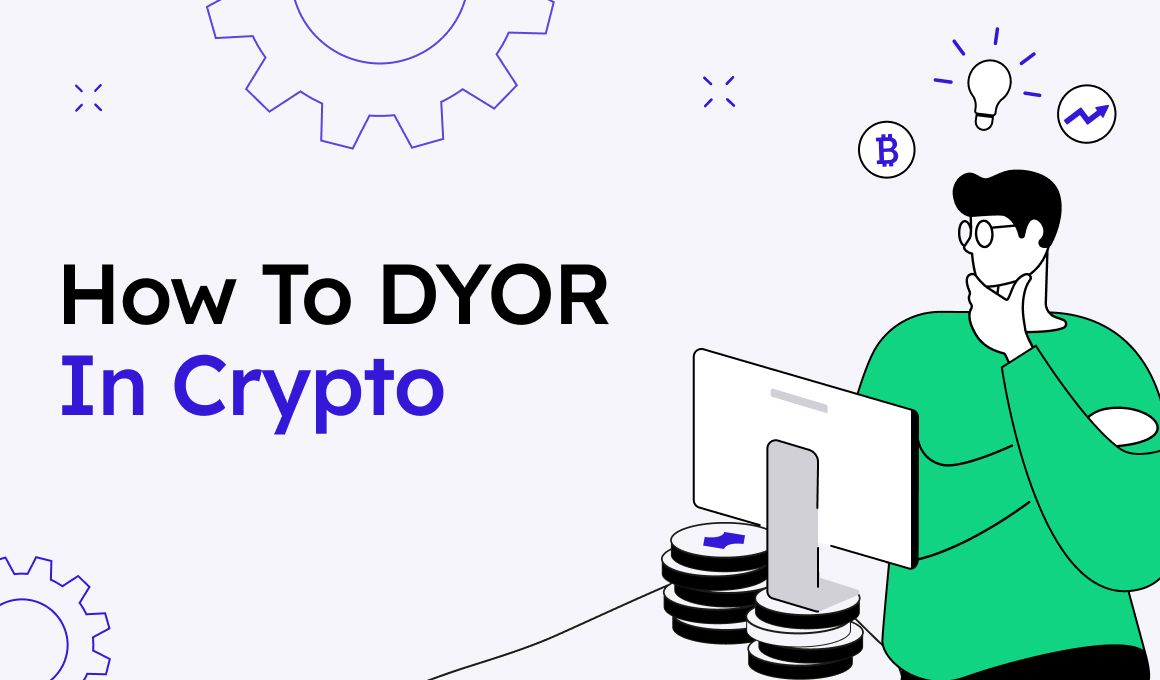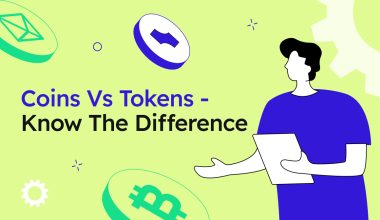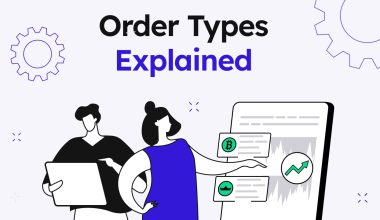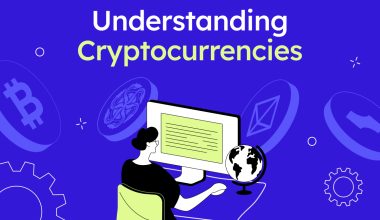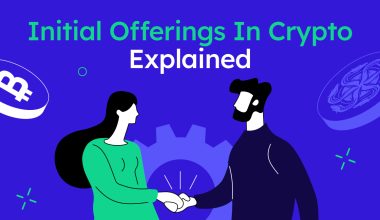After the crypto explosion of 2020 and with the influx of hundreds of new investment options in crypto, it can be overwhelming to find the right project to invest in. This is where Doing Your Own Research (DYOR) comes in.
Make no mistake – scams and vaporware projects are rampant in crypto, and researching projects to get a feel for their value and potential is of the utmost importance.
DYOR is crucial in crypto, and we’ll provide you with some tips to see if you have the right project in your sights.
Why DYOR is Important
DYOR is one of them most widely used acronyms in the crypto space and with good reason. Doing Your Own Research is a crucial aspect of investing in the cryptocurrency market. Unlike traditional investment avenues, such as stocks and bonds, the crypto market is relatively new and largely unregulated. This makes it particularly vulnerable to fraud, scams, and misinformation.
In this context, DYOR refers to conducting thorough research and analysis of a particular cryptocurrency project before investing your hard-earned money in it. It involves evaluating the team behind the project, the technology being used, the market demand, and any potential risks.
In the world of crypto, the importance of DYOR cannot be overstated. As the market is highly volatile, with prices fluctuating rapidly and drastically, it is crucial to have a deep understanding of the project you are investing in. By doing your own research, you can make informed decisions, minimize risks, and potentially reap significant rewards.
In the following sections, we will explore some of the best tips for conducting effective research. Consequently, this can help you find the right crypto project to invest in.
DYOR the right way
So, you’ve found a potential project to invest in. You like the name, the logo, you’ve seen hype posts on social media – it’s the next big thing, or so they tell you. But where to start with researching the project? How do you know it’s legitimate and you will not fall victim to a scam?
Start with the project’s website
Every legitimate crypto project has a solid, well-designed, nicely laid out website. It lists key priorities, links, and information about the project. This should be your first point of departure with any new asset you research. If there’s no website, the chances are it’s a scam.
If the website uses a generic template for its layout, it might have been set up in an hour. As silly as it might sound, look for websites that feel unique, and where you can see the fingerprints of designers and developers clearly. Anyone can set up a run of the mill website – look for something that stands out and can therefore be considered legitimate.
Also, if the website has typos, spelling mistakes, grammatical errors, and other inconsistencies, thread carefully. Take everything with a grain of salt – after all, if the team can’t bother to make a proper website, then how good can their project be?
And speaking of teams…
Check the Team
When researching the team behind a crypto project, there are several things you can do. Here are some tips to help you.
Again, start with the project’s official website. Is there a team section? If so, are team members listed with their real names? Do they have photos? This is crucial – a team of anonymous developers and managers is one of the biggest warning signs out there.
After the preliminary website check, continue with the team’s social media channels. Check if the team members have experience in the field of the project they are working on, as well as their educational and professional backgrounds.
Follow the trail
Use LinkedIn to research team members’ profiles and work experience. Look for any inconsistencies or red flags that could indicate fraudulent activity or impersonation and follow up on information listed for each team member. Can you trace their work history to relevant third-party sources like other company websites? If so, then there’s a good chance they are legitimate professionals. Also: Google them.
Are the team members active?
Check if the team members have public profiles on platforms like Twitter, Medium, or Github. Look for any contributions they have made to the project, as well as their interactions with the community.
Look for any past projects or businesses that team members have been involved in. Check if they have a good track record in their previous ventures and if they have been successful.
Research any advisors or investors associated with the project. Check their background and see if they are reputable in the industry.
Consider using third-party sources like TokenData or ICO Bench to get an independent evaluation of the team behind the project.
If the team seems a-okay, you can move on. But there’s still a lot to do to verify the project.
Check the Whitepaper
When looking for a legitimate cryptocurrency project, the whitepaper is an essential document to review. Here are some key things to look for in a whitepaper to help determine if a project is legitimate.
Problem and proposed solution
A legitimate whitepaper should clearly explain the purpose of the project and the problem it aims to solve. Look for a well-defined problem statement that provides a clear understanding of what the project intends to achieve. Is the method described?
Developers and company executives should have a clear vision of what they’re trying to achieve, and not just that – their goals must be useful. This should be listed in the whitepaper.
Technology
The whitepaper should explain the technology behind the project and how it works. It should also provide enough technical details to help you understand the complexity of the project, but not so much that it becomes difficult to comprehend. Remember – you are one of the recipients of the whitepaper. If you can’t understand it, something’s wrong with it.
Roadmap
The whitepaper and most probably the project’s website should have a detailed roadmap that outlines the project’s milestones and goals. A legitimate project will have a well-planned and achievable roadmap, with goals that can be achieved on time. A roadmap can give you a rough estimation of things you can expect – not just in terms of project development, but also in terms of your investment. After all, completing roadmap goals is one of the factors that will positively affect your investment over time.
Tokenomics
The word “tokenomics” is a portmanteau of the words “token” and “economics” and serves to describe the economics of a blockchain-based digital asset. The tokenomics will include information like the asset’s total supply, its distribution and allocation, and its intended uses. You need to research the tokenomics because they can paint a vivid picture of the project’s future, providing an estimate for growth, development, and potential return on investment.
They are also quite important in order to see if the token’s supply is distributed fairly. Understand how many tokens will be created, how they will be allocated, and who will control them – if five wallets hold 50% of the supply of a new crypto asset (or any asset for that matter), then things are looking very bad. Also look for information about any token sales, pre-sales, or airdrops.
Legal compliance
Check if the project is compliant with relevant regulations and laws. A legitimate project will be developed by a registered company or foundation which complies with all applicable laws and regulations. Your Google skills will come in handy here as well.
In summary, a legitimate cryptocurrency whitepaper should provide clear and detailed information on the project’s purpose, technology, roadmap, team, partnerships, tokenomics, and legal compliance. By thoroughly reviewing the whitepaper, investors can make informed decisions and avoid potential scams.
Okay, we’ve scratched the surface. Now let’s go deeper.
Check the Community
A thriving community is a good sign that a crypto project has a strong following and potential for growth. Check the project’s social media channels, forums, Telegram groups, and Discord channels to see how active and engaged the community is. Look for a project with a passionate and supportive community that is actively discussing the project’s development daily. This could be a good indication.
Not all active communities are real communities. The internet and crypto are swarming with bot armies that automatically copy and paste the same comments over and over again, trying to sell a project to real people. This is known as “shilling”.
Identifying bot armies is not hard – go to the project’s social media channels and look for repeating comments and patterns and take a look at the profiles that “shill” a project. Do they look real? Do their profile pictures seem real? Sometimes all it takes to know a bot is to look at their name or handle on Twitter, or their profile picture. In time, and as you get more experienced, you will recognize the bamboozlers from miles away.
Another thing to consider is the spewing of bot-like phrases for no apparent reason, especially if a project’s followers say nothing but. Things like BUY THE DIP, TO THE MOON, LFG, WAGMI, and relevant robot talk brings nothing to the project, and could indicate a fake community comprised of bots.
Projects that rely entirely on bots for marketing and exposure are not something you want to get into.
Check the Technology
If you’re really serious about researching the project, you can also delve into the technology behind it. Here are some tips on how to do it:
- The whitepaper has to present the project’s technology, architecture, and functionality. It should provide a clear explanation of how the technology works and the problem it solves.
- Check the code: If the project is open-source, check the code on GitHub or other code repositories. This will help you understand the quality of the code, the development activity, and the overall progress of the project.
- Every crypto asset out there has its own token contract address: a unique identifier of a smart contract that manages the digital token on the blockchain. Paste that contract number (which looks like this: 0x7051faED0775f664a0286Af4F75ef5ed74e02754) into Google and check the results. They can tell you everything you need to know.
- Check the code on Etherscan. Also check the comments.
- Use third-party apps like Dapp Radar or CoinGecko to check the token. Apps like these provide useful information and warning signs for bad tokens.
Check the Partnerships
When doing your own research, it’s important to consider partnerships because they can provide insights into a project’s credibility, use case, and future prospects.
Partnerships can take many forms, such as collaborations with other crypto projects, strategic alliances with established businesses, or endorsements from industry experts. A strong partnership can bring in new users, enhance the project’s reputation, and ultimately increase the value of the token.
Check the Market Cap
When researching crypto projects, the market cap is important because it can provide insight into the project’s overall size, popularity, and potential for growth. A high market cap generally indicates a larger, more established project with significant user adoption and market demand. A low market cap, on the other hand, may suggest a newer or less well-known project with less market adoption.
While a high market cap can be a positive indicator, it’s important to note that it’s not always a guarantee of success. Similarly, a low market cap doesn’t necessarily mean a project is a bad investment. Ultimately, market cap should be considered alongside other factors.
In addition, a high market cap can mean that the cryptocurrency has already reached its potential for growth and may not have much room for appreciation. Conversely, a low market cap may indicate that a cryptocurrency is undervalued and has significant growth potential.
Check the Exchanges
Check which exchanges have listed the crypto project you’re interested in and assess their reputation and security. Look for a project that is listed on reputable exchanges with high trading volume, and, on that note, check the token’s own trading volume – this can be done through data aggregators like Coinmarketcap or CoinGecko, provided the project has been listed on the platforms. If it hasn’t, well – things are not looking good.
Conclusion
Every time you have doubts about a project (some projects simply do not require this kind of extensive research), follow the steps listed out above – they are a perfect way to really go in-depth with a project and make sure you stay safe.
DYOR is crucial in finding the right crypto project to invest in. With these tips in mind, you can make informed decisions and invest in the right crypto projects.
Keep reading, keep learning – explore more of your resources below.
